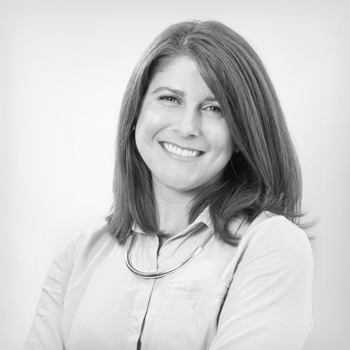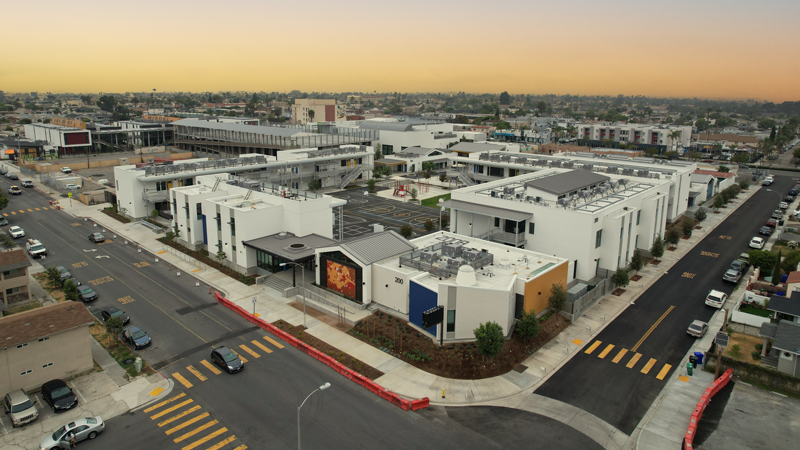12.3 minute read
August 18, 2021
We all carry some sort of bias—a prejudice toward or unfair characterization of people based on identity factors like gender/sexual orientation, age, race/ethnicity, socio-economic status, and disability. We may not even be aware of our biases since they often form at an early age and develop over a lifetime of exposure to certain attitudes.
Having biases doesn’t make us bad people, but we should try as best we can to acknowledge them and strive to be bias-free and inclusive, particularly in our professional communications.
In the current political and social climate, organizations should reflect on how they communicate in their social media, emails, memoranda, and technical documents. At Harris, we scrutinize closely the words and images we use, understanding that even a small amount of bias, however unintentional, could have large, negative impacts.
Avoiding biased language starts with knowing what to look out for. Biased language is communication considered prejudiced, offensive, harmful, or hurtful. It includes words, phrases, and expressions that belittle or dismiss groups because of the identity factors mentioned above, among others. It can also convey the superiority or inferiorly of specific groups. In short, the words you use can have questionable associations and implications for your audience.

As a professional communicator, you should actively use language that includes people of all genders/sexual orientations, ages, races/ethnicities, socio-economic statuses, and disabilities in a way that makes no assumptions of the groups discussed.
By using bias-free, inclusive language in your communications, you can:
- Promote Your Organization’s Principles of Representation and Visibility. Your organization serves various communities with different needs, goals, identities, and perspectives. Therefore, your goal should be to represent these different voices and to provide visibility for these communities, especially in public-facing documents, such as Environmental Impact Reports, Climate Action Plans, Technical Reports, General Plan Elements, and Master Plans, to reach a larger audience without making others feel excluded.
- Build Trust and Establish Relationships in Communities Where Your Organization Works. When organizations use biased language in their communications, their audience notices, and because they communicate in a way that offends or demeans certain groups of people, they damage their credibility. However, when organizations communicate in a way that reflects their principles regarding representation and visibility, they build trust and establish meaningful relationships with their audience and in the communities where they work.
- Increase Your Organization’s Innovation and Success.1, 2 Studies show that organizations working in groups composed of many identities, viewpoints, and experiences are more innovative and more successful than homogeneous organizations. Using bias-free, inclusive language assists in gaining the support of a more diverse audience and understanding and meeting the needs of the various communities your organization serves.

The Harris team put together several tips to help your organization use bias-free, inclusive language in your professional documents and daily communications:
- Be Conscious of the Words and Images You Use. We choose words and images due to underlying biases, and this affects how the entire communication is framed. The Conscious Style Guide3 provides a clear example of how words and images convey a certain meaning: Think of the connotations tied to “noise” and “sound.” “Noise” is often framed as a negative word, while “sound” is not. Be conscious of how the words and images you use in communications frame a person, situation, or community, and use language sensitive and respectful to many identities and audiences.
- Avoid Assumptions and Descriptors That Reinforce Stereotypes. Avoid reducing a person, situation, or community to a detail or stereotype, such as women as administrative assistants and men as engineers. Stay away from descriptors that suggest a statement is an exception to what the audience expects, like the sentence “Intelligent Latino business owners attended the public hearing,” which suggests that being both Latino and intelligent is an anomaly.
- Be Specific When Appropriate. Avoid references that draw undue attention to particular backgrounds or identities. For example, in the sentence “Twelve City Councilmembers were led by gay City Council President Jane Doe,” Jane Doe’s sexual orientation isn’t relevant to their leadership of the City Councilmembers and, therefore, doesn’t need to be included. However, when specific references are valid, learn the most appropriate terminology or use the term preferred by the person or group concerned.4
- Use People-First Language. People-first language avoids defining a person by, for example, their disability and places the reference to a disability after the reference to the person, such as “a person with a disability” rather than “a disabled person.” However, some groups prefer to be represented using identity characteristics, so always ask what terminology they’d prefer.
- Use Parallel Context and Equal Portrayal. Ensure all groups are fairly represented in your communications. This includes using parallel context, such as “Victoria Azarenka beat Serena Williams at the U.S. Open” instead of “Victoria Azarenka beat African-American Serena Williams at the U.S. Open,” in which Serena William’s race is stated but not Victoria Azarenka’s, and race isn’t relevant to the statement. Also, use images that show equity, such as men and women performing the same tasks instead of men working and women observing.
- Consider Providing Support for Those Whose First Language Is Not English. Offer translated versions of your communications for audiences you serve whose first language is not English. This increases access to your organization’s documentation and, therefore, understanding, transparency, and trust between the communities and your organization.
- When In Doubt, Look It Up or Ask the Community What Their Preferred Terminology Is. When unsure of what terminology to use when referring to a specific community, look it up or respectfully ask that community for their preference. For example, Harris created a Hawaiian terminology dictionary to use when writing technical documents for a client in Hawaiʻi to respect the client’s preferences and cultural heritage.
- Be Willing to Change. You’ll make mistakes as you consciously implement bias-free, inclusive language, but that’s the only way to learn and grow. When you stumble, acknowledge your mistake and respectfully respond to the communities you serve. By doing this, you’ll show your organization’s commitment to diversity, equity, and inclusion.
Say This, Not That
Below are examples of problematic, biased language regarding gender/sexual orientation, age, race/ethnicity, socio-economic status, and disability. We have also included bias-free, inclusive alternatives and explanations.
Gender/Sexual Orientation
|
chairman; chairwoman |
chair; chairperson |
Gender is not relevant to the professional title and is not needed. |
|
fireman; firewoman |
firefighter |
|
|
he/she; he or she; (s)he; him/her; his/hers |
they; them; their |
The alternatives are inclusive of all genders and include those who may not identify as male or female. |
|
homosexual |
gay; lesbian; gay person |
The alternatives are the more acceptable terms; “homosexual” is considered an outdated clinical term and offensive/derogatory.5 |
|
husband; wife |
partner; spouse |
Gender is not relevant to the relationship title and is not needed. |
|
landlord |
owner |
Gender is not relevant to the professional title and is not needed. |
|
man hours |
person hours |
Gender is not relevant to the description of work and is not needed. |
|
manmade |
human-made |
|
|
manpower |
workers; workforce |
|
|
policeman; policewoman |
police officer |
Gender is not relevant to the professional title and is not needed. |
|
sexual preference |
sexual orientation |
“Sexual preference” implies that attraction to the same sex is a choice. “Sexual orientation” is the more accurate term.6 |
|
transgender (noun) |
transgender (adjective) person |
“Transgender” should be used as an adjective only because it is the preferred construction by the group described.7 |
|
woman engineer |
engineer |
Gender is not relevant to the professional title and is not needed. |
Age
|
the aged |
older adult; older person; person 65 years and older |
The problematic terms perpetuate the stereotype that older adults are less able (intellectually, physically, or emotionally) than other age groups and that they are in a group separate from society. |
|
the elderly |
||
|
old person |
Race/Ethnicity
“Race” refers to physical differences that groups consider socially significant.8
“Ethnicity” refers to shared cultural characteristics, such as language, ancestry, practices, and belief.9
|
culturally disadvantaged; culturally deprived |
historically underrepresented group; people of color |
The problematic terms imply the dominant culture (i.e., white culture) is superior to other cultures, that other racial/ethnic groups lack having a culture of their own, and that “white” is the standard that all other cultures should be judged against. |
|
minority |
Socio-Economic Status
|
the homeless; homeless person; transient |
person experiencing homelessness |
The problematic terms imply criminality and define the person only by their housing status. “Person experiencing homelessness,” which is constructed as people-first language, instead identifies what the person is experiencing and not what they are. |
|
the poor; poverty-stricken person; low-income person |
person experiencing poverty; person living at or below the poverty line |
The problematic terms are broad, judgmental, and generalizing and define the person only by their socio-economic status. The alternatives, which are constructed as people-first language, instead identify what the person is experiencing or has and not what they are. |
Disability
|
[health condition] victim |
person with [health condition] |
The problematic terms are negative terms that imply restriction or are considered slurs that insult or belittle the person being described. The alternatives, which are constructed as people-first language, instead identify what the person is experiencing and not what they are. |
|
addict |
person with a substance abuse disorder |
|
|
blind person |
person who is blind |
|
|
handicapped; physically challenged |
person with a disability; person who has a disability; person with a physical disability |
|
|
mentally ill; crazy |
person with mental illness |
|
|
normal people; healthy people |
people without [health condition] |
|
|
special needs; mentally challenged; mentally retarded; retarded |
people with intellectual disabilities |
Additional Resources
Here are some additional resources you can reference as you work on using bias-free, inclusive language at your organization:
- American Psychological Association Bias-Free Language Guidance: https://apastyle.apa.org/style-grammar-guidelines/bias-free-language
- American Water Works Association: https://awwa.onlinelibrary.wiley.com/doi/10.1002/awwa.1615
- Asian American Journalists Association: https://www.aaja.org/2020/11/30/covering-asia-and-asian-americans/
- Conscious Style Guide: https://consciousstyleguide.com/
- Elements of Indigenous Style: A Guide for Writing By and About Indigenous Peoples by Gregory Younging
- GLAAD Media Reference Guide: https://www.glaad.org/reference
- MyPronouns.org: https://www.mypronouns.org/
- National Association of Black Journalists: https://www.nabj.org/page/styleguide
- National Association of Hispanic Journalists Cultural Competence Handbook: https://nahj.org/wp-content/uploads/2020/08/NAHJ-Cultural-Competence-Handbook.pdf
- National Center on Disability and Journalism: https://ncdj.org/style-guide/
- The Diversity Style Guide: https://www.diversitystyleguide.com/
If you have any questions, please reach out to Harris’ Technical Editor Lindsey Messner below.
1https://www.scientificamerican.com/article/how-diversity-makes-us-smarter/
2https://www.mckinsey.com/business-functions/organization/our-insights/why-diversity-matters
3https://consciousstyleguide.com/beyond-terminology-zooming-focus-bias/
4https://interactioninstitute.org/wp-content/uploads/2016/06/Sum-Of-Us-Progressive-Style-Guide.pdf
5https://www.glaad.org/reference
6https://www.glaad.org/reference
7https://www.glaad.org/reference
8https://apastyle.apa.org/style-grammar-guidelines/bias-free-language/racial-ethnic-minorities
9https://apastyle.apa.org/style-grammar-guidelines/bias-free-language/racial-ethnic-minorities
Authors
Source
Harris & Associates
Categories
AEC Industry
Corporate Social Responsibility
Diversity Equity and Inclusion












